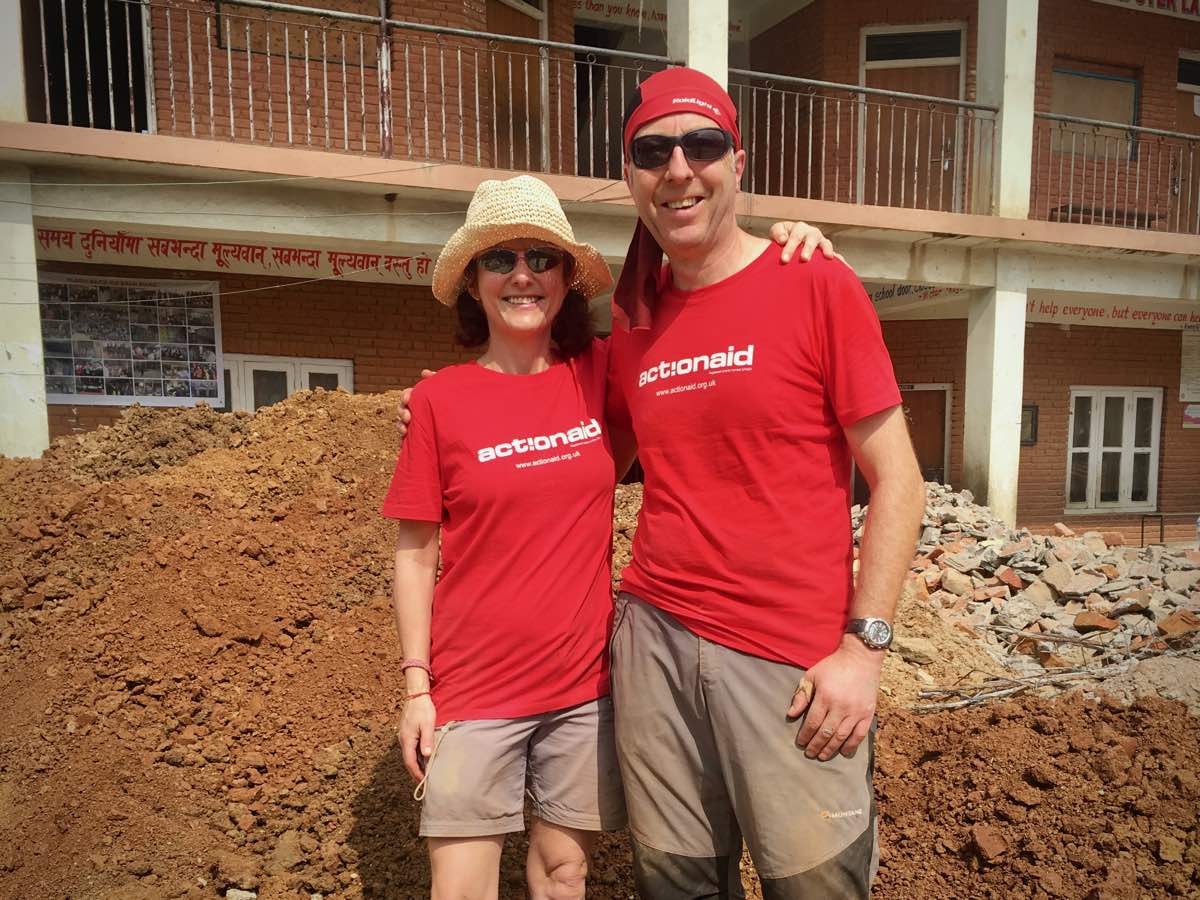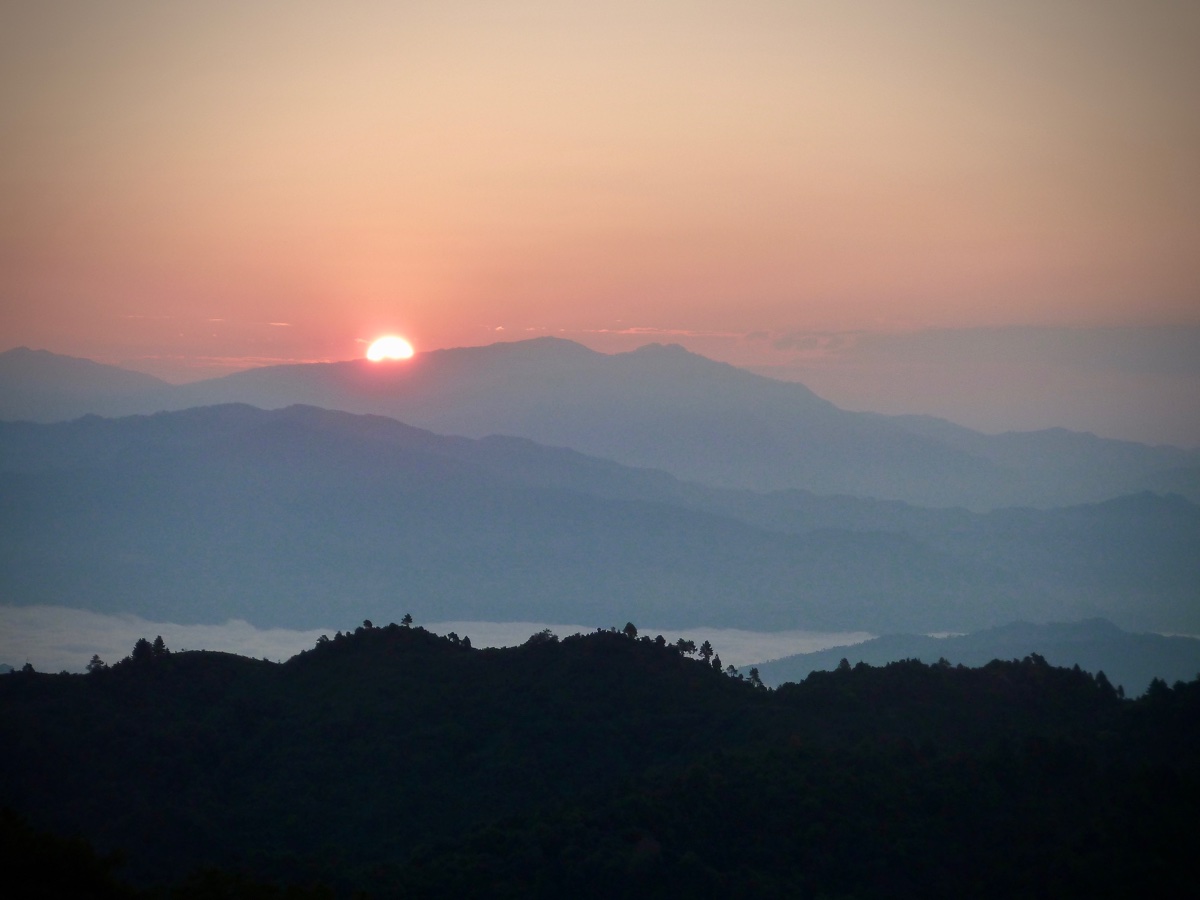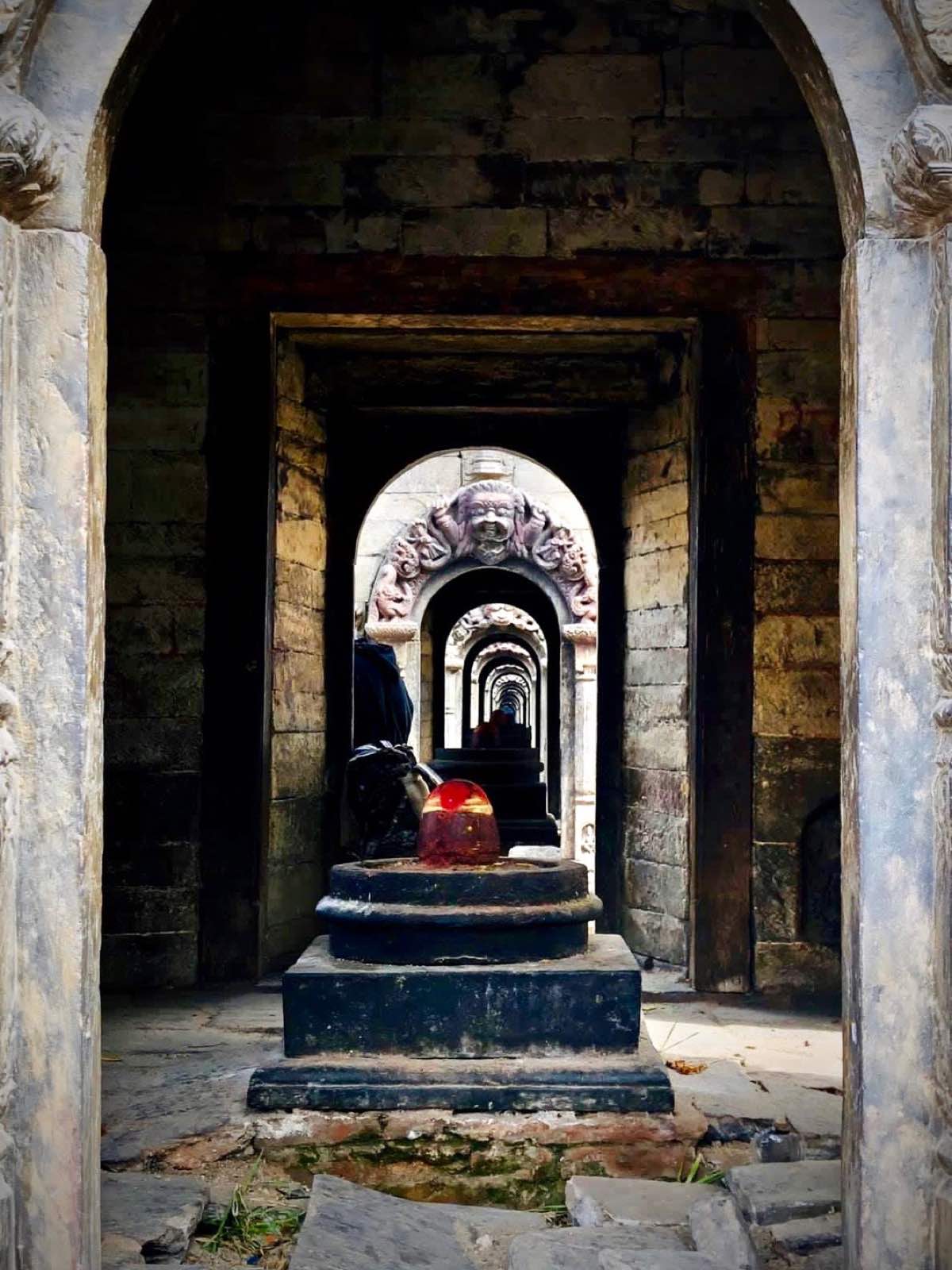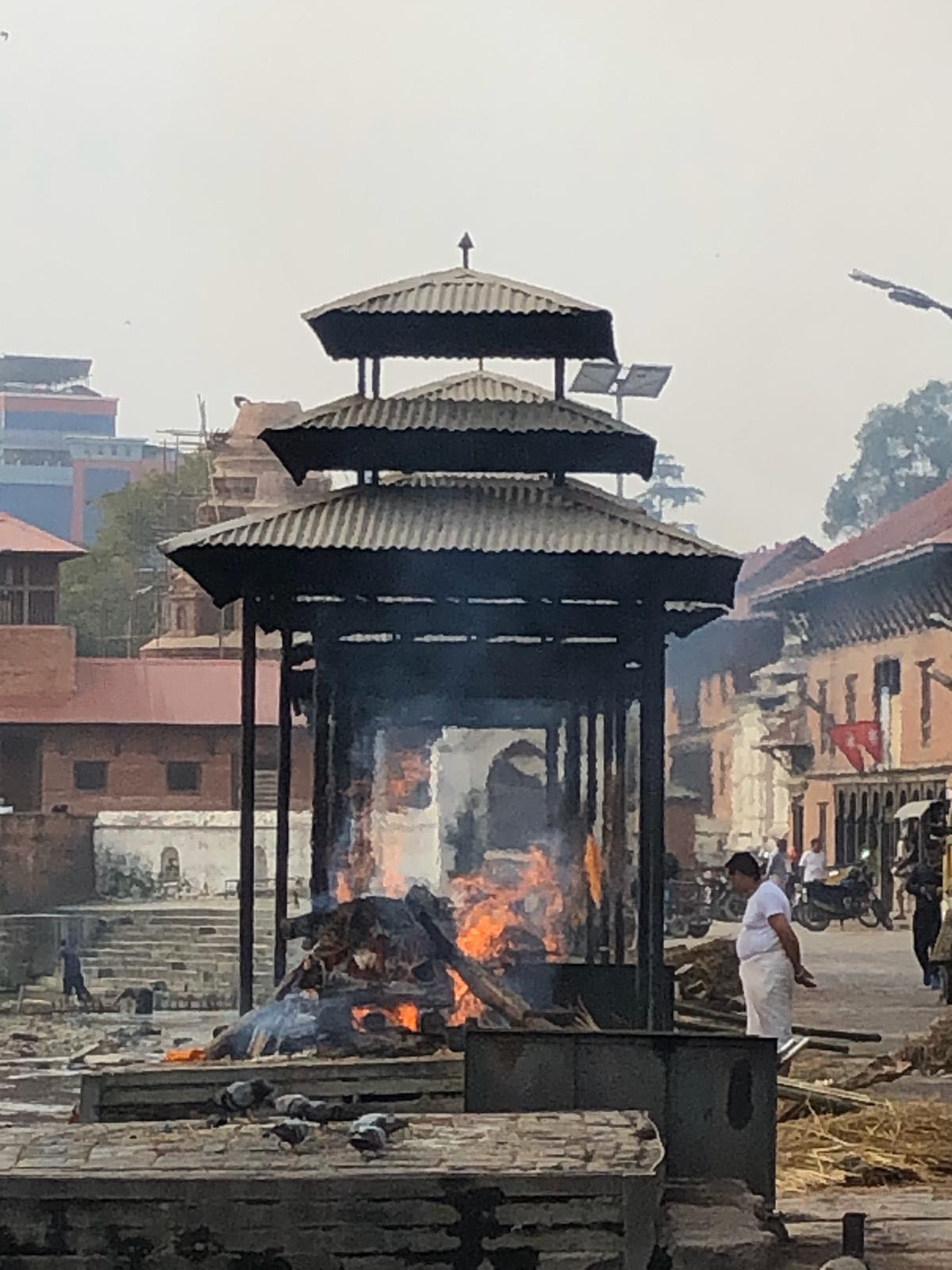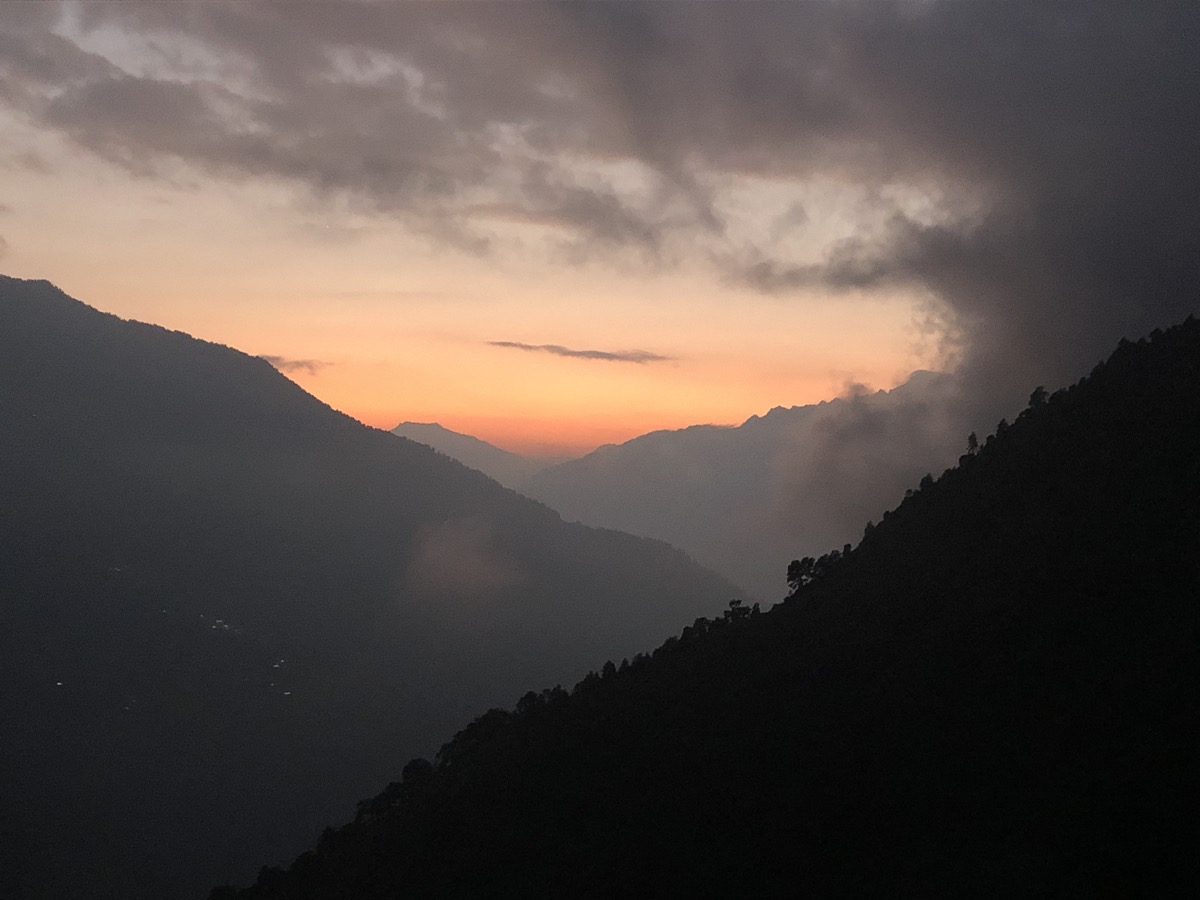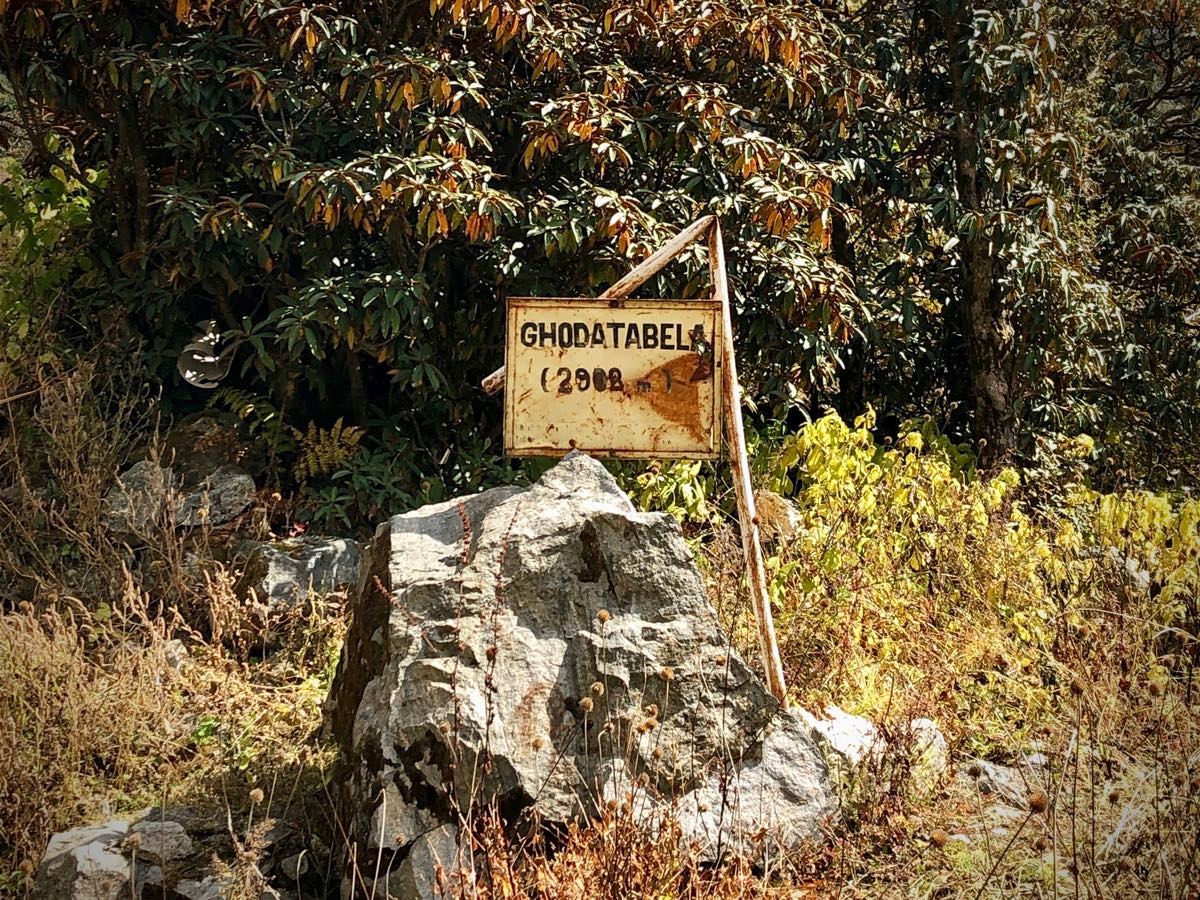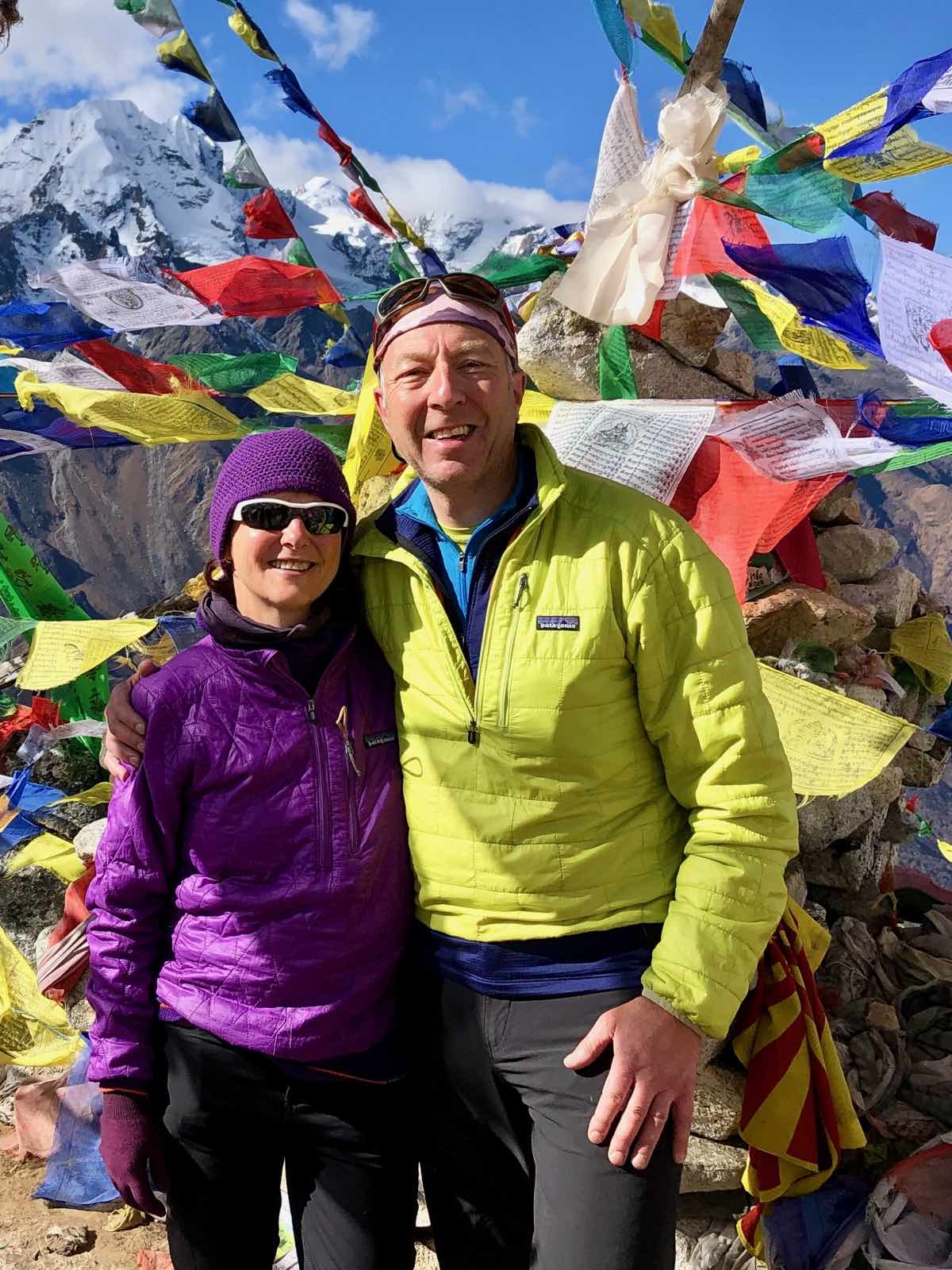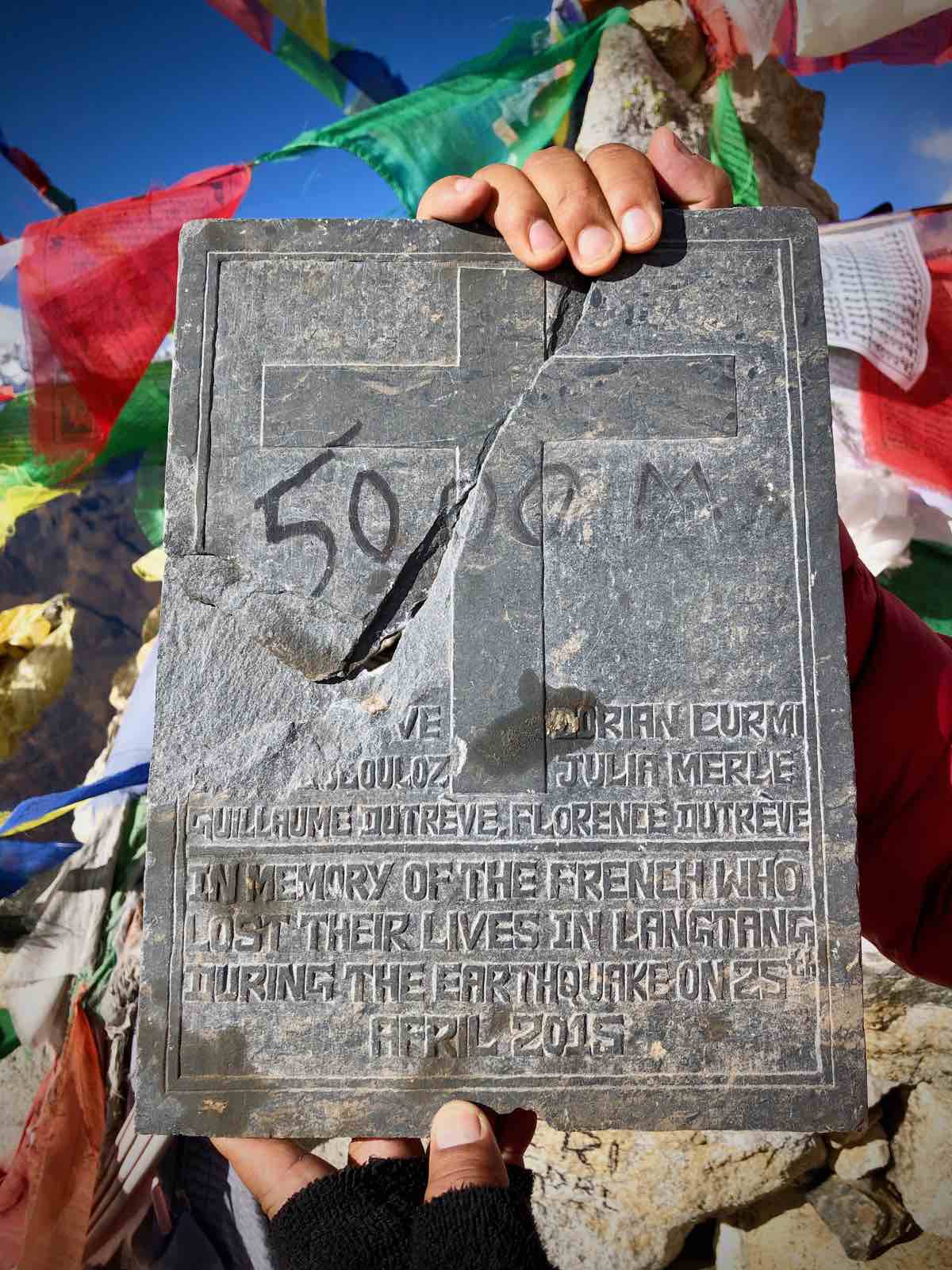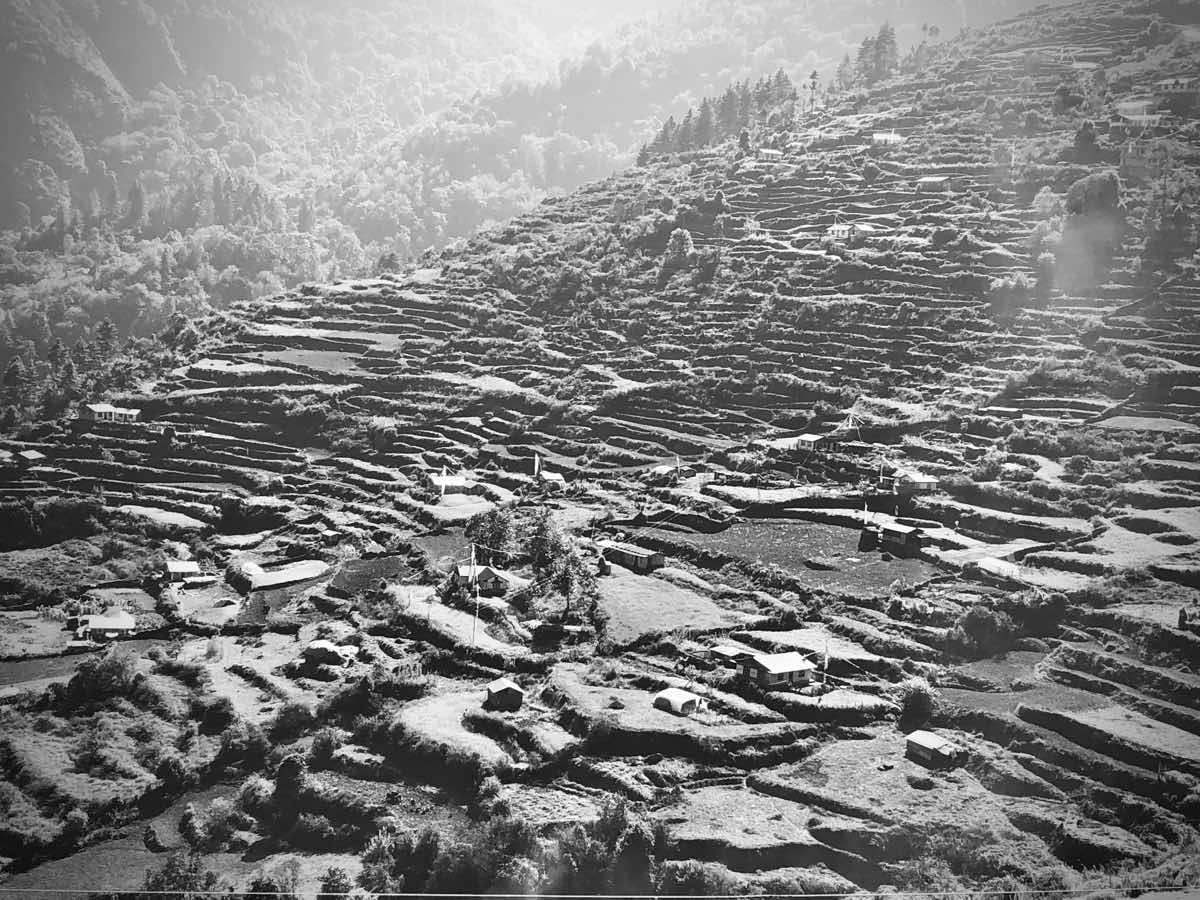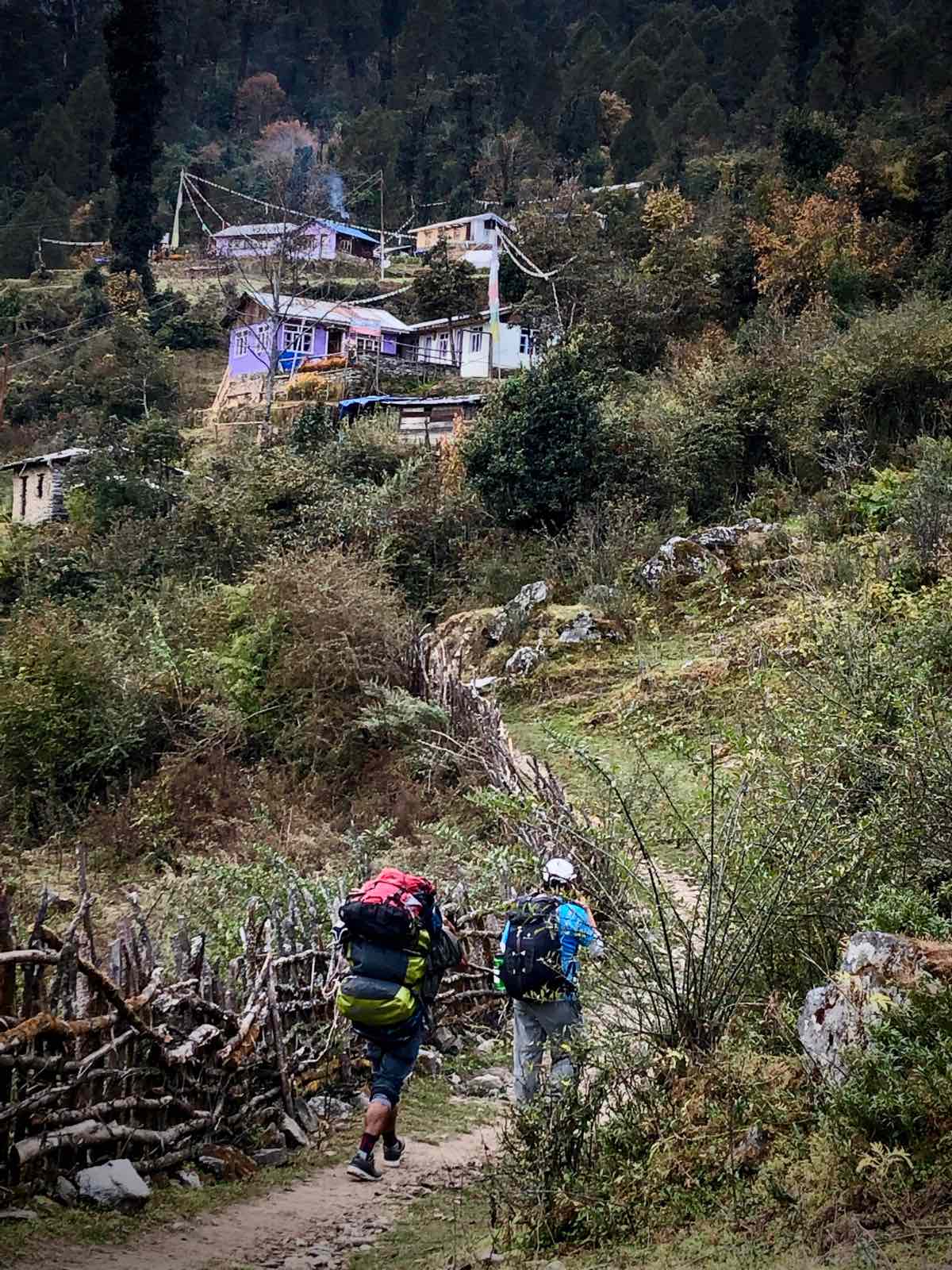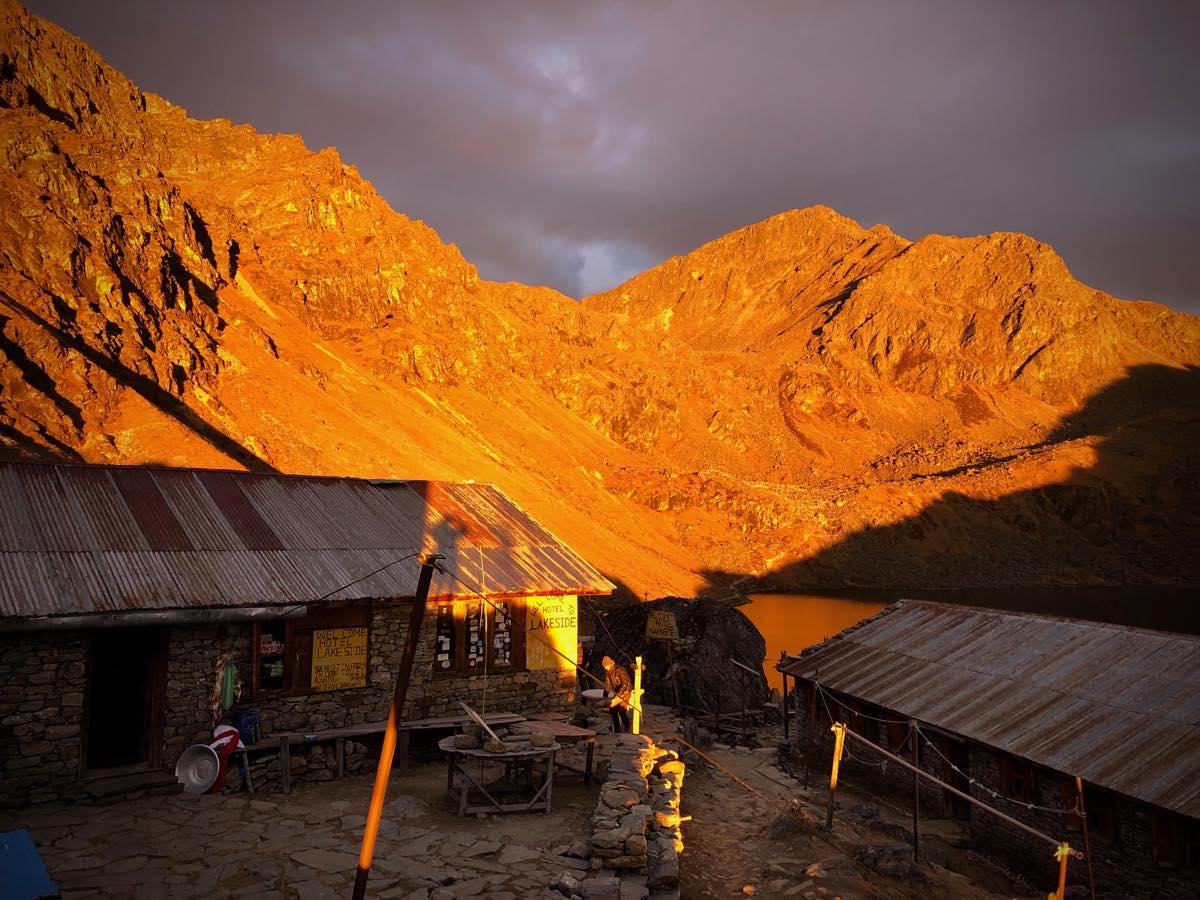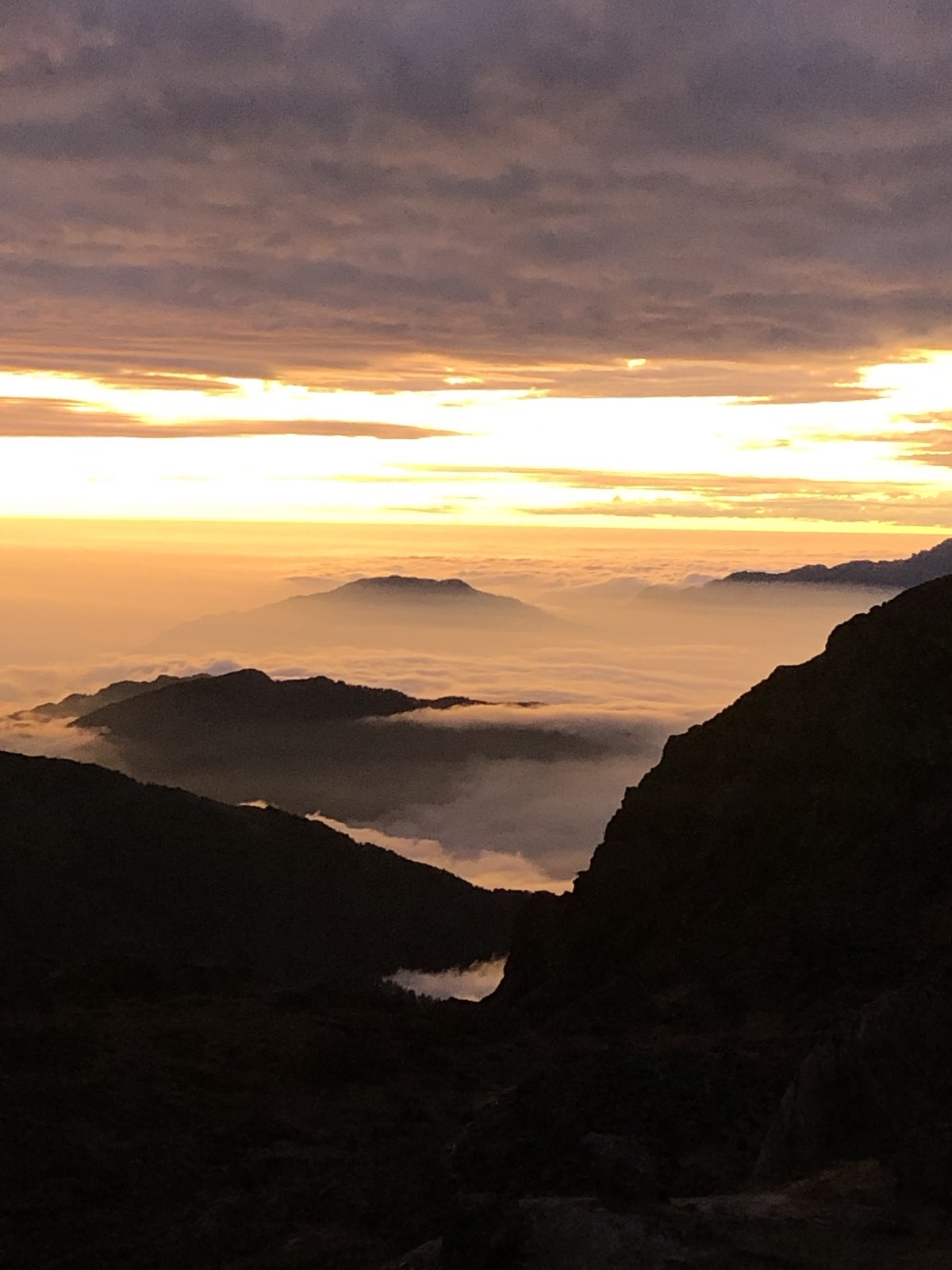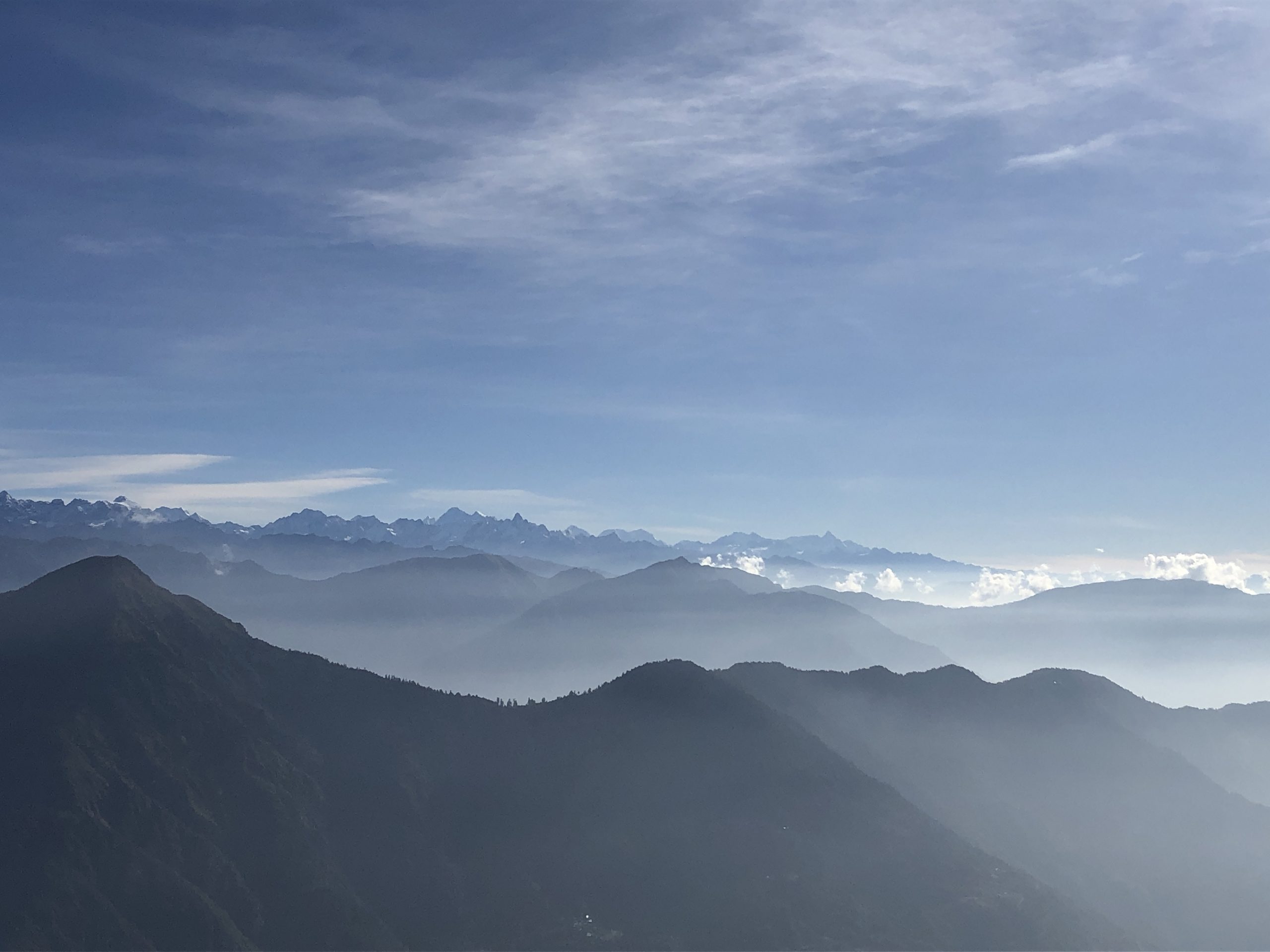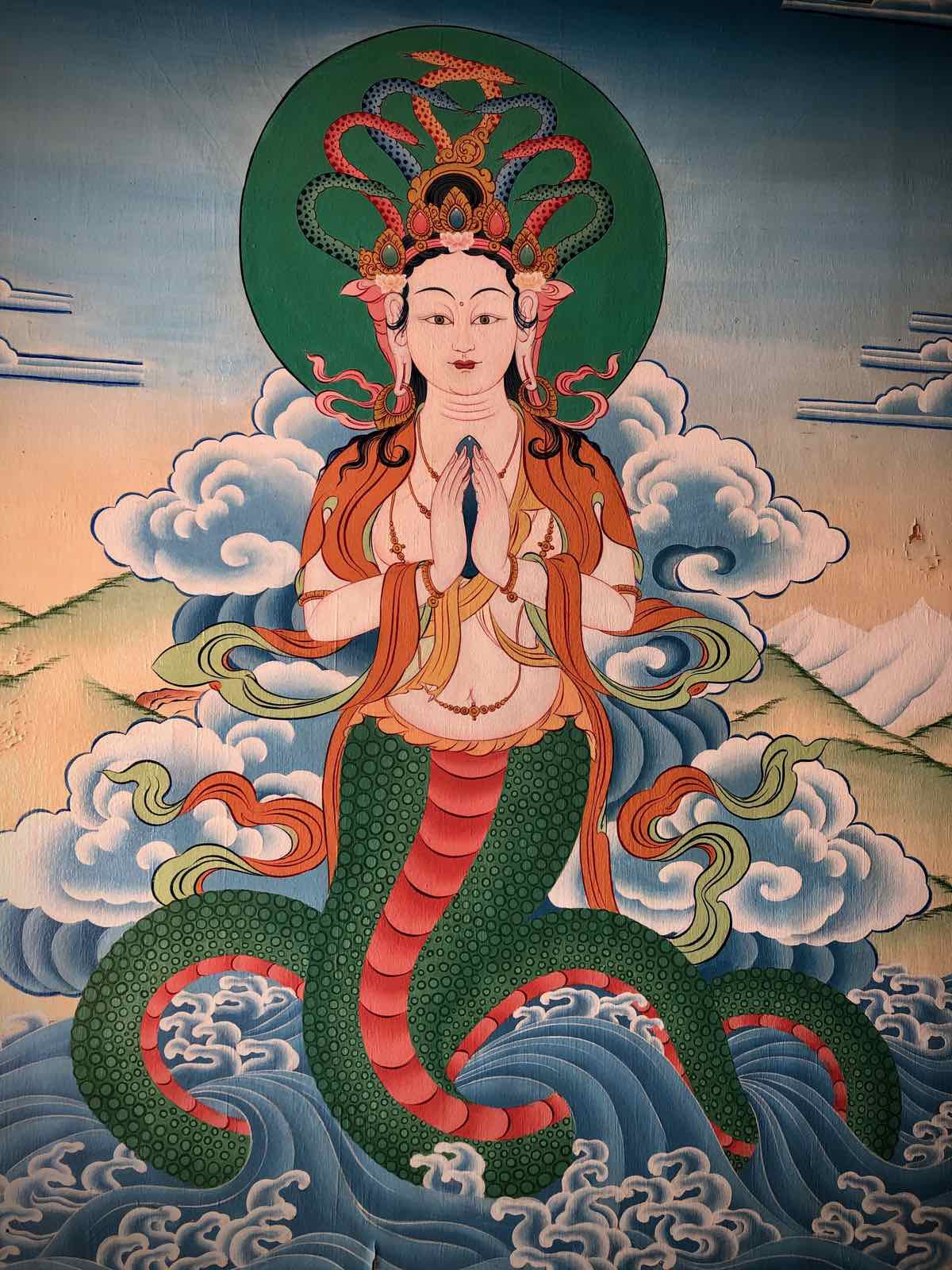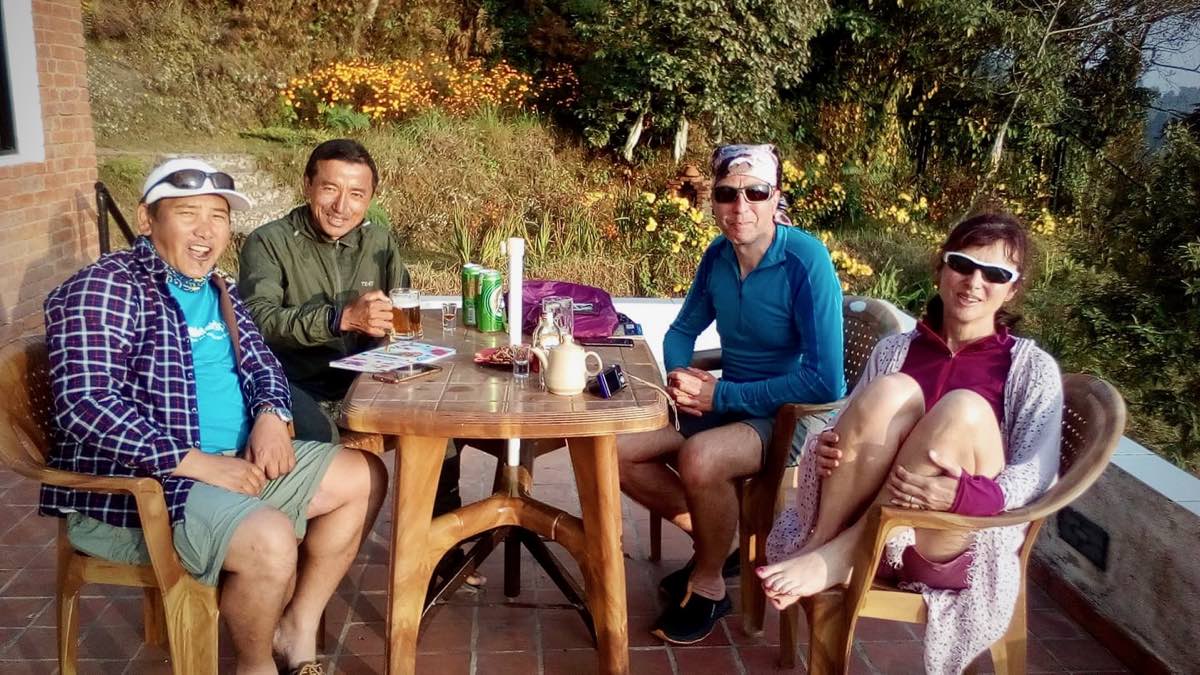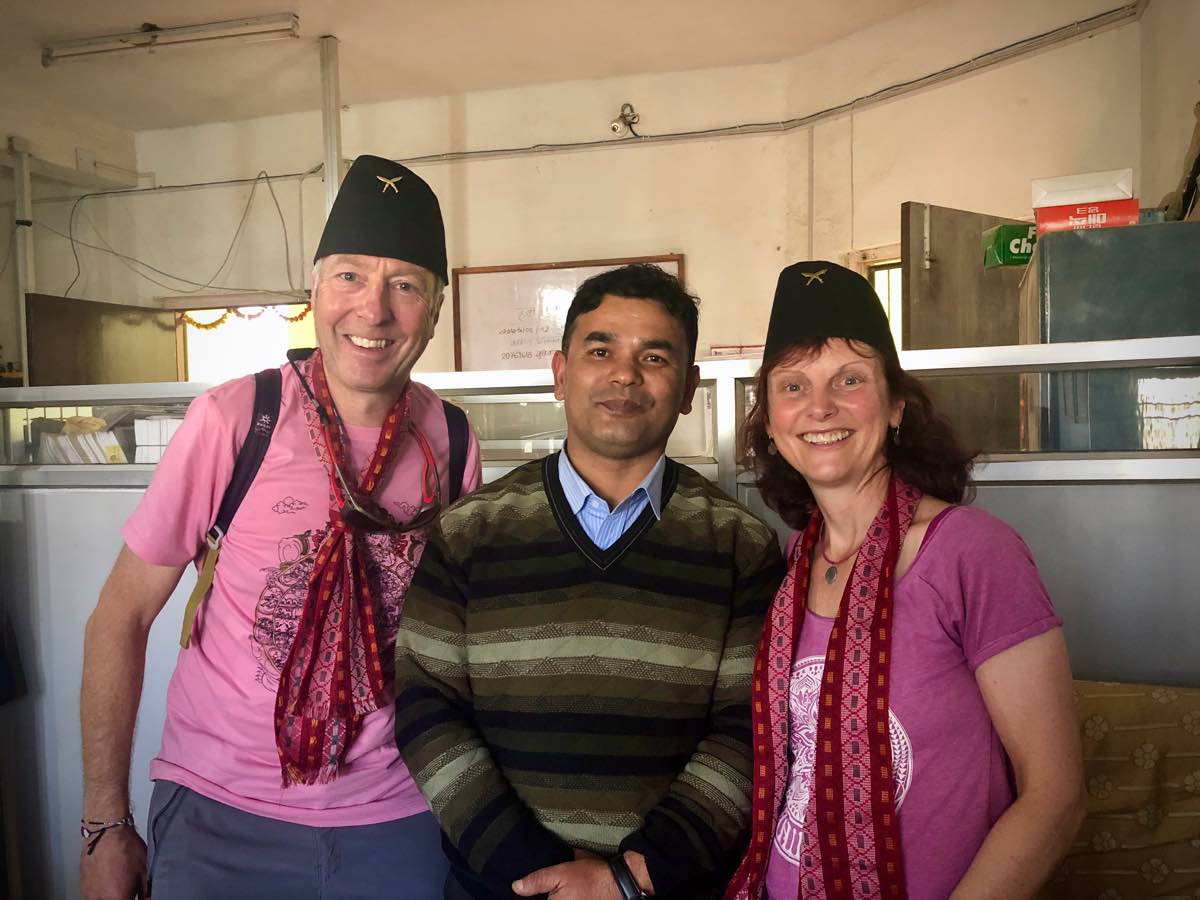[Editor’s Note: We are so excited to launch our Community Voices column into 2020 with Morgan Williams’s long-form prose. Morgan is a fell runner, ultrarunner, and writer based in northern England. In this column each month, we showcase the work of a writer, visual artist, or other creative type from within our global trail running and ultrarunning community. Our goal is to tell stories about our sport and wildlands in creative and innovative ways. Read more about the concept and submit your work for consideration!]
[Author’s Note: I borrowed the title of this piece from the English mountaineer Doug Scott. Doug wrote his article, printed in Mountain 15 in 1971, about his ascent of the Salathé Wall on El Capitan in Yosemite National Park with Peter Habeler. This narrative is about a much less vertical trip, but I feel complete understanding with Doug when he wrote: “…but after the trip I did seem to know positively where to go next–and that was back into society, relaxed, but with a new zest and enthusiasm….”]
It’s hot, by English standards anyway. I’m filthy, covered with dust and soil, about six feet below ground, pounding away with a pick axe, trenching tool, and shovel. It is autumn of 2017 and my wife Alison and I are helping to dig the foundations for a new three-story classroom block at Bani Bilas School on the outskirts of Kathmandu in Nepal. The old block was destroyed in the 2015 earthquake that affected significant parts of the country. Fortunately, the block was empty of children and teachers when the earthquake occurred. Good karma.
My day job is desk-bound mostly, so these five days of manual labor are a shock to the system. I’m part way through recovery from a serious knee injury after a bad running fall in 2016. Two knee ligaments have been repaired, my badly smashed tibia required substantial metalwork to fix multiple breaks, and a second plate mended my broken collarbone. Like I said, a bad running fall. The left knee just doesn’t work the way it used to, so every new activity or the reintroduction to old ones has the frisson of uncertainty.
I survive the week. We see something of Nepal and its mountains, even if from afar. Best of all, we make some Nepali friends who work in the mountains, and we promise to return.
I’ve done enough traveling in the East to know that you must go with an open mind. Pico Iyer, born in England of Indian parents and now settled in Japan, writes that: “To travel across the globe simply to locate the facilities of the place one has quit would of course be an exercise in perversity (1).”
Iyer ruminates further on the tourist-local relationship, reminding us that as tourists we are not beleaguered innocents and the locals not shameless predators. “To do so is to ignore the great asymmetry that governs every meeting between tourist and local: that we are there by choice and they largely by circumstance; that we are travelling in the spirit of pleasure, adventure and romance, while they are mired in the more urgent business of trying to survive; and that we are often courted by the government, enjoy a kind of unofficial diplomatic immunity, which gives us all the perks of authority and none of the perils of responsibility, while they must stake their hopes on every potential transaction… Every foreigner is a messenger from the world of dreams (2).” When we return to Nepal, it is important to us to ‘travel well.’
As we plan our return, we decide that it is best we move through the Himalaya with some help, in case the reconstructed knee causes trouble. No lesser experience we hope. In emails back and forth to our friend, Gokul Thapa, one of the partners in Real Himalaya Pvt Limited who helped arrange the 2017 trip, we debate various options, one of which is to visit the Langtang Himal region, north of Kathmandu, returning by the sacred lakes of Gosainkund. This would be perhaps 16 days of mountain travel, mostly in a designated national park. I discover that English explorer H W (Bill) Tilman, a man who didn’t impress easily, explored the Langtang Valley in 1949 and noted: “The upper Langtang is a fine open valley, rich in flowers and grass, and flanked by great mountains (3).”
We also recall that in 2015 Kilian Jornet arrived in Nepal with the intent of reconnoitering Everest just after the earthquake. He and his friends abandoned their Everest intentions to help people in the Langtang Valley. Their film “Langtang” recording their efforts filled us with horror and sadness, but also with respect for the resilience of the Nepali people. The exhortation in the film to visit to help the local economy get back on its feet is the final push we need to know that Langtang is where we want to visit.
In 2019, we finally return to Nepal. Before we head for the mountains, we have time for some sightseeing in Kathmandu. Gokul takes us out for the day. Nepal is a fascinating hodgepodge of religions, especially for the godless like me. Eighty percent of the population is Hindu, 11% are Buddhist with Muslims, Kirants, Christians, and Bön making up the rest of the religious mix. Gokul is a Hindu.
An early morning finds us at the Pashupatinath temple complex, dating from the 5th century, dedicated to Lord Shiva, the Hindu god of power and destruction, which sits on the banks of the Bagmati River and is a sprawl of 518 temples, images, ashrams, and ghats (cremation spots.) Here we find sadhus (religious ascetics who have renounced the worldly life), cows, goats, and always many people. The Bagmati finds its way south and flows into the Ganges. Because it flows into the Ganges, the Bagmati is a holy river. Gokul recalls swimming in the river when he was younger. Now, it’s in need of a good clean to remove the dead marigold garlands, ashes, bone fragments, and all the detritus of modern life floating along it or marooned on its banks.
Close by are the funeral ghats which stretch along the river bank and the temple is almost always thronged with funeral ceremonies. In the immediate aftermath of the 2015 earthquake, victims arrived a dozen every hour and some days there were nearly 200 cremations (4). Despite some reluctance to observe, Gokul guides us through the experience, which is highly colorful by Western standards. According to the Nepalese Hindu tradition, a dead body must be dipped three times in the holy Bagmati before cremation, so that the reincarnation cycle may be ended. The chief mourner, usually the first son, who lights the funeral pyre, must take a holy-river bath immediately after the cremation. Many relatives who join the funeral procession also bathe in the river or sprinkle holy water on their bodies at the end of the cremation. The Bagmati spiritually purifies (5).
The corpses are loosely wrapped in cloth but are unwrapped for bathing. These are new sights for us both, and a blunt reminder of the impermanence of life. Death is the only true certainty and it is common to us all. The experience reminds us to live our lives today because who knows what tomorrow may bring.
That afternoon, Gokul introduces us to our guide who will be our constant companion for the next two weeks or so. Sange Sherpa hails from the lower Solukhumbu District where Everest is located, is solidly built, and has a proper twinkle in his eye. He clearly knows Langtang and Gosainkund well. We break the ice at the Kathmandu Guest House over vegetable and paneer pakoras and a cold beer. Immediately, we feel comfortable and chat away, swapping mountain tales and experiences. We quickly discover that Sange spent five years of his life in a monastery and his Buddhist faith is a cornerstone of his life. Like us, he is itching to get into the mountains.
The obligatory jeep ride of seven hours or so takes us to the village of Syabrubesi, where the Langtang and Trisuli Valleys meet and from where we begin our trek. On the way, we collect our porter and the second of our two companions on our trip, Wongchu Sherpa. It’s a novelty to have someone carry my kit for me in the mountains and I have some reservations at the prospect. A short reflection suggests I have fallen into the classic Westerner’s trap: either we can’t understand that a system can be different to ours, or we can understand and we can’t stop telling those in the other system what’s wrong with it. I relax and remember that the trekking and mountaineering seasons are short, the job pays well, and families need to survive the rest of the year. And the metal plate in my right shoulder, smashed in the accident, means I bear heavy weights on it with pain.
Rather than take the route deep in the river valley, I persuade Sange that we should take a higher, traverse route into Langtang from Syabrubesi village via Sherpagaon village. Tilman went this way and I feel motivated to follow in his footsteps (6). Our sea-level bodies don’t suffer too badly on the initial climb up toward 2,500 meters, and slowly the gigantic scale of the landscape of Langtang Valley becomes apparent. A few hours in, we flush out a mongoose. It is distinctly unhappy at our presence and lets us know that in noisy terms. The climb finally relents, and we crest a ridge and move into the much-anticipated traverse section. There we come across two huge Korean caterpillar-tracked diggers. Looking ahead, as far as we can see, the age-old singletrack has been obliterated under a nascent jeep track. The damage is significant and the slopes below, especially the couloirs, are littered with fresh, loose earth and huge rocks torn from the ancient landscape.
Sange is taken aback; we all are. The next kilometers are tinged with anger at what feels like wanton destruction. This triggers a conversation with Sange regarding interaction between national and local government, the body responsible for national parks, and the interests of the people who live here and who have businesses to cater for trekkers and climbers. No good answer comes out of this attempt to understand who makes the decisions, why, and in whose interests. Then Sange mentions the plan for a jeep road to be blasted from Syabrubesi village at 1,500 meters all the way to Langtang village at 3,430 meters, currently a two- or three-day hike. The effect on local businesses will be dramatic. Able to reach Langtang village in a few hours, tourists will come and go in a day. The local lodge owners may sell a few extra lunches but their dinner and bed trade will be hugely reduced. Selfishly perhaps, it begins to dawn on us that we may have to bring forward plans to visit other regions of Nepal.
Later, as the day fades, from our elevated position at Sherpagaon village, the valley darkens to black whilst the sky turns a beautiful peachy pink, and all is briefly well with the world once more.
Day 2 is a long one. We hike all the way to Langtang village, about 20 kilometers. The weather is warm with no clouds in sight. The river valley is magnificent and a constant delight. But regularly, we cross landslide areas from 2015 which remain unstable and dangerous. We know that late in the day we will walk across the site of where Langtang village used to be. In the 2015 earthquake, several million cubic meters of mountainside slipped off Langtang Lirung, a 7,200-meter mountain, and buried the entire village. Everyone there that morning, over 200 people, died. In Kilian’s film, he and his friends didn’t approach this part of the valley because it was still too dangerous.
All day, Kilian’s film flickers across my memory banks. I have tears in my eyes as we pass through the ruins of the tiny settlement of Ghodatabela, also destroyed in the quake. But these ruined buildings are little preparation for the devastation higher up the valley. The lower slopes of the mountain Langtang Lirung, once wooded and vegetated, are now grey rock. They have been scoured clean of their top surfaces. The valley bottom is an enormous chaos of rock, huge boulders, earth, smashed trees, and vegetation through which we walk. This is the brutal power of nature laid bare. Kilian has a phrase “We can’t fight nature” and its meaning has never been more obvious. For the high mountain people though, life goes on, and the village, now moved up the valley, is re-establishing itself after the tragedy. Life, after all that death.
On the third day, our journey onward takes us to Kyanjin, the highest settlement in Langtang Valley at 3,830 meters. The space around us feels endless. The sky is a cerulean blue. The trail wanders through a Buddhist landscape. Small stupas, dome-shaped buildings erected as shrines, are dotted about. Everywhere are long mani walls, with their beautifully inscribed stones. The stones are carved with the six-syllabled mantra of Avalokiteshvara, om mani padme hum, as a form of prayer in Tibetan Buddhism. Avalokiteshvara means ‘Lord who looks down with compassion’ and I think how suitable the mantra is in this tragedy-struck place. Sange imparts as much wisdom as he can to help us grasp the significance of what we see and we listen with delight to his quiet, bass-note, morning chants as we progress along the trail. The peace is profound.
Wasting no time, and some might say breaking all the rules of acclimatization, our fourth day on the trail see us heading for the summit of Tserko Ri, a small peaklet by Himalayan standards, up-valley and east of Kyanjin village. As we have walked, Sange has grasped something of our mountain background and history, and our respective many years of mountain running. He has also been able to assess our fitness and adaptation to the altitude. We are all content with the decision-making.
It is chilly at 5:00 a.m. when we leave Kyanjin and we need our headlamps. Sange has broken out his ‘big coat.’ Wongchu, the strong man, appears utterly comfortable with his limited kit and, importantly, has the breakfast cheese and honey flat breads in his rucksack. It’s a four-layer day for this Northern European.
We gain height steadily and pass a few other early starters, including two French women. Nine in the morning finds us on top of the mountain, a smidgen shy of 5,000 meters. It is sunny and windy, but thankfully not brutally cold. The only effect of the altitude is a gentle headache and we continue to drink the copious water we carried with us. From our elevated situation, mountains crowd around us, but even higher: Yubra, Dagpachen, Yala Peak, Shishapangma, Langsisa, Pangen Dopku, Gangchempo, and the Langtang peaks. Faced with such a sight, even the godless must contemplate the intervention of a higher power. There are prayer flags everywhere on the summit, blue for sky, white for air, red for fire, green for water, and yellow for earth. The flags carry the texts of a thousand prayers stitched into the cloth and are intrinsic to Tibetan Buddhism. The wind takes their healing meditations and carries them out over the world.
The French women catch us up whilst we indulge in an orgy of photography. They have come to pay their respects to the French people who died in the Langtang village landslide. Sange is able to find a broken-in-half memorial plaque placed up here in memory of them. It seems symbolic that even it is in pieces. This is a somber moment.
Death, that most human of experiences, has been an integral part of every day since we arrived in Nepal and the theme continues as we descend from the mountain. One of the delights of being in these mountains is the complete absence of the internal combustion engine. As we descend, we hear the first such noise for days, a helicopter flying up the valley. Later we discover it was headed to Langsisa base camp to retrieve the body of someone who had died from altitude sickness. Tomorrow is never promised, is it? I recall that some Buddhists believe that life is the center of an endless web of moral credits and debits that will end only in death. In these awesome surroundings, I reflect on how my scales might be balanced.
After descending the Langtang Valley almost back to Syabrubesi village, largely following our route up, we swing south then southeast and climb again, heading for the sacred lakes at Gosainkund. We are not to escape Lord Shiva. He meditated for several years in the Himalaya and took a bath in the largest of the many lakes and acquired purity of soul. Many Nepalis visit Gosainkund and bathe in this lake in the hope that their sins and sorrows will fade away. The shadow of Shiva is ever-present.
We are walking strongly now, so undertake another significant day’s hike, from the village of Thulo Syabru at 2,200 meters up to the tiny group of lodges at Gosainkund at 4,480 meters. The houses in Thulo are dotted about a giant hillside which has been shaped into hundreds of terraces for cultivating crops. It is a delightful day as we wend our way through a variety of climate zones. The jungle-like lower elevations give way to rhododendron forest then banks of firs. Eventually we pop out above treeline. By now, we seem to swing along at a modest pace but one which covers the ground easily. Our days are intensely physical but we’re not finding them overly taxing and seem to have hit a ‘sweet spot.’ We are ruled principally by the coming and going of daylight and how much ground we want to cover. We’re smiling a lot.
Our last few hours this day are enlivened by our interactions with numerous pilgrims coming toward us who have made the trek from Kathmandu to the sacred lakes. Their beatific smiles and limited clothing and equipment for the altitude suggest they have arrived at a place of deep contentment.
We reach the lakes of Gosainkund in the late afternoon and, once we have donned down jackets, stand outside our lodge and watch a magnificent sunset from our high perch. Mother Nature is capable of delivering the sublime, and at a level far beyond human comprehension, design, or replication. In my life most of these moments have taken place in the high mountains. I understand that these sights are why we go, and why I feel that we must continue to return to these high places for as long and as often as we can.
The following morning, we climb higher, cross the Laurebina La Pass at 4,600 meters, and begin our four-day descent through delightful terrain to the outskirts of Kathmandu. One morning we look east over a gorgeous landskein with ridge after ridge of mountains stretching away to the horizon. Sange shoots out the names of dozens of peaks, and fights to locate Everest. I smile to myself, recalling Tilman’s gently acerbic remark: “The identification of very distant peaks is a harmless and fascinating amusement, so long as the results are not taken seriously (7).”
One evening at the village of Thadepati, the wood-burner in the lodge dining room is broken. As we are the only guests, we are invited into the lodge kitchen with Sange and Wongchu. East meets West head-on at this point. After some reticence from the lodge owner and her daughter-in-law, everyone relaxes and we have an evening we will never forget. The talk flows easily, the food is excellent, and we feel part of the family.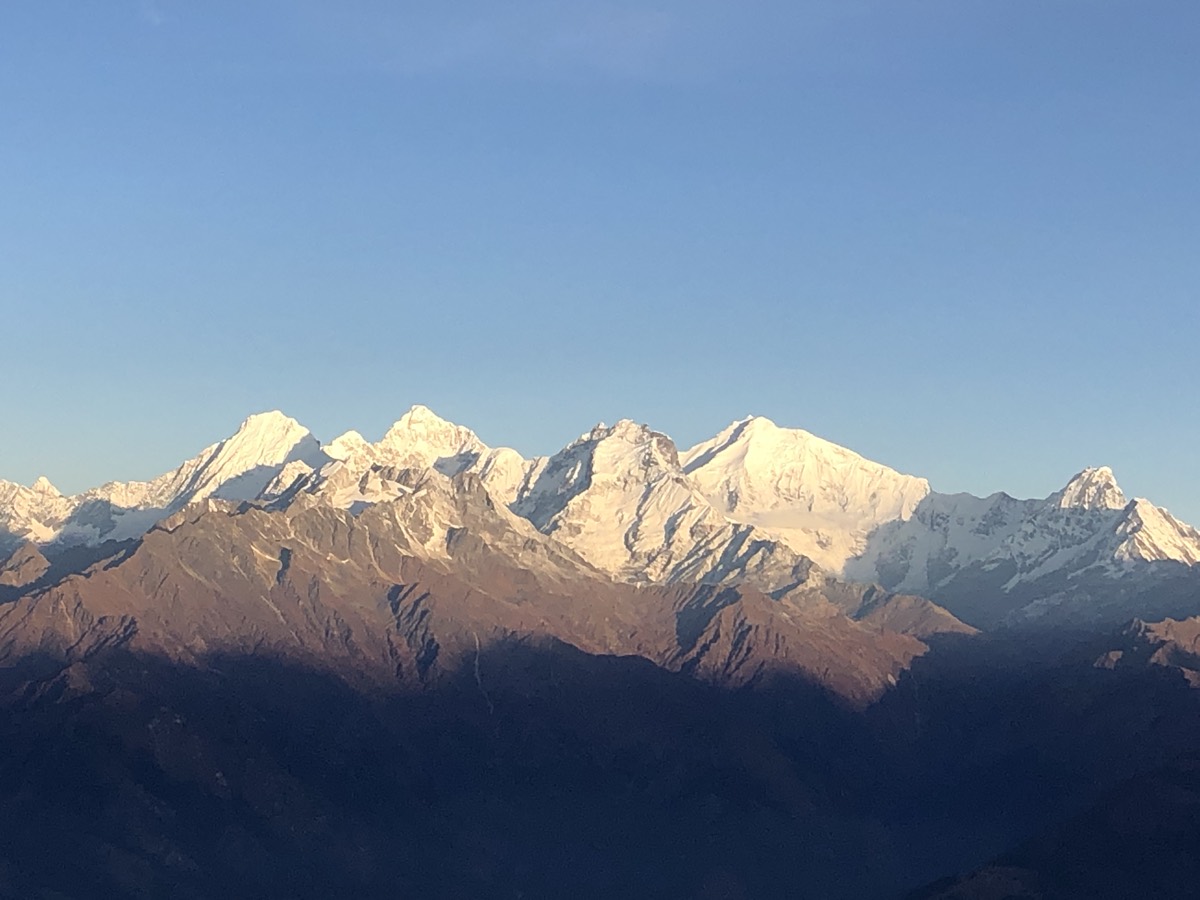
Ganesh Himal.
Our last night on the trail is spent in a lodge with the name ‘House of the White Snake Lady.’ It is hard to get to the bottom of this name, but some after-the-event research suggests it’s named after the Chinese Legend of the White Snake (8). Myths and fairytales respect no border. We only have a few kilometers to walk in the morning, and I am tempted to suggest to Alison that we turn around and walk in reverse to our starting point. We have the inclination but not the time. Reflecting out on the terrace on our time in the mountains, a great sense of well-being comes over me. Two weeks of constant foot travel with my loved one and two fine companions through the mountains has cleansed me somehow. I feel disgustingly fit and healthy. My work and domestic worries have vanished. I’m focussing only on essentials.
Back in Kathmandu, we have more time to reflect. We have made new friends and experienced first hand one of earth’s most magnificent landscapes, inhabited by warm-hearted people. Physically, we have both coped perfectly with the terrain and altitude. Two weeks of almost constant movement, up and down, mean that my knee feels better than at any time since the accident 39 months ago. The implications of this sink in.
We make our return to the school at Bani Bilas where we dug foundations in 2017. Whilst we were away, Gokul, our friend and Kathmandu-based partner of our trek organizer, took a wadge of our rupees to the school supply store and bought a box of items for us to give to the school; something for all ages as the school takes children from six through to 18. The headmaster and teachers welcome us with the traditional gifts of scarves and hats. The sight of the new three-story classroom block and the new separate toilet facilities is a revelation. Some of the children remember us from 2017. We will never forget this place either. We have ‘traveled well’ and somehow, a circle feels closed.
Back home, after three weeks away, I am immediately smashed back into the maelstrom of work. Within four weeks, my physical and mental health are sliding backward. The intensity of the immediate workload means no runs, and barely any walking. I had hoped the trip would be a springboard to more activity, not less. The rungs of those magnificent Eastern ladders have been smashed to kindling. I’m hurtling down an endless Western snake, headed back to square one.
The time spent in the mountains improved us both in mind and body. Alison and I talk things through, and change is in the air. Life needs to be re-ordered, priorities shifted. The East has worked its subtle magic on us. After such close contact with destruction, death, and rebirth, maybe I have genuine intimations of mortality. Certainly my life is well more than half done, Alison’s too. We resolve to create a life of what passes for perpetual motion. This can’t happen tomorrow, but the days of the desk-bound job are strictly numbered, and a less cluttered, less painful future lies ahead. We are on the profundity trail.
Call for Comments (from Meghan)
- Have you ever had such a moving experience in the outdoors that it somehow reset your life’s course?
- If so, can you share your experience?
References
- Iyer, Video Night in Kathmandu, Bloomsbury 1988 p 8
- Iyer, ibid p 15
- H W Tilman, Nepal Himalaya, Cambridge University Press, 1952.
- https://www.bbc.co.uk/news/world-asia-32492693
- For a piece on the Bagmati see: https://blog.nationalgeographic.org/2015/08/01/what-the-river-knows-bagmati-river-nepal
- Tilman, ibid p 33
- Tilman, ibid p 17
- The Legend of the White Snake also known as Madame White Snake: https://www.wikiwand.com/en/Legend_of_the_White_Snake
